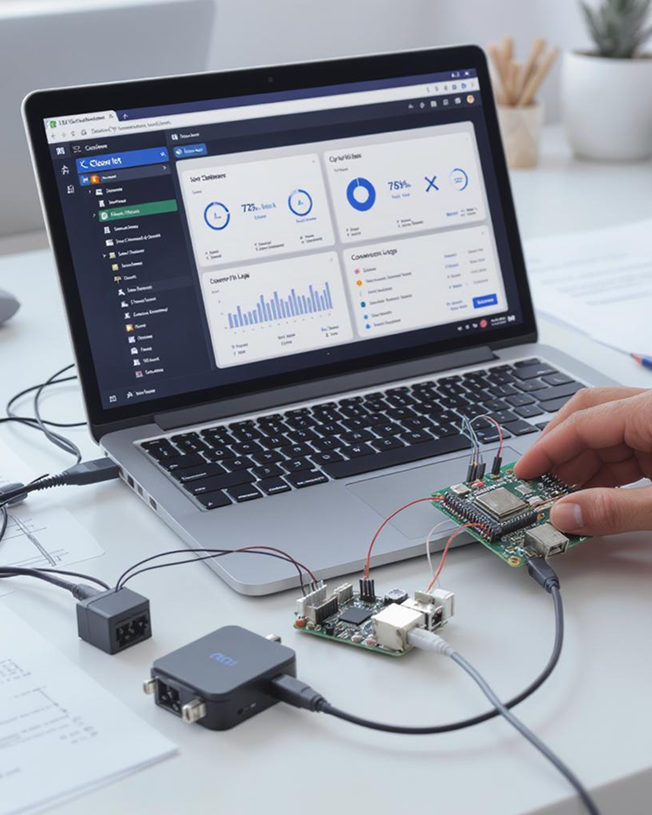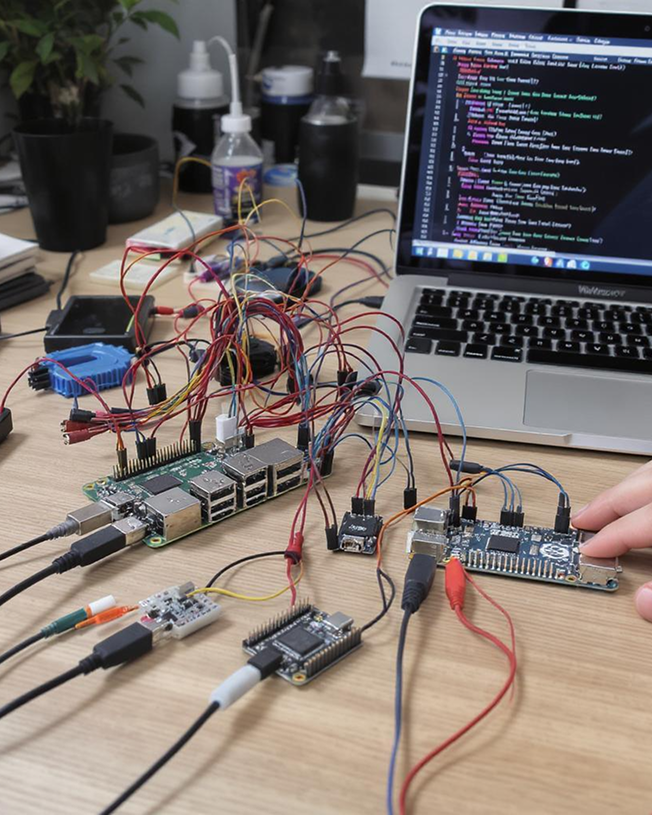Unlock the full potential of IoT systems with scalable, flexible, and cost-effective cloud integration. Our expertise lies in connecting embedded solutions with leading cloud platforms such as Azure, AWS, GCP and custom cloud infrastructures. Benefit from secure remote monitoring, seamless OTA updates, and efficient edge processing. Get in touch to explore the possibilities!
Get a QuoteWe cover every aspect of IoT development to ensure your business operates smarter, faster, and more efficiently.
Connecting IoT devices to cloud platforms like AWS, Azure, or custom cloud solutions for data storage, processing, and analytics.
Designing and configuring IoT gateways to bridge communication between devices and cloud platforms using protocols like MQTT, HTTP, and WebSockets.
Enabling remote firmware and software updates for IoT devices to ensure optimal performance and security.
Integrating analytics tools and dashboards to provide real-time insights and decision-making support for IoT applications.



We follow a step by step process, from planning to deployment and optimization. To ensure our deliverables are scalable and secure IoT solutions that fit your needs.
The process begins with a thorough analysis of specific requirements. The team assesses existing systems, data sources, and connection points to develop a tailored integration strategy, defining the architecture, tools, and frameworks needed for seamless implementation.
Nawatech specializes in seamlessly executing integration strategies using cloud-native tools, APIs, and middleware, ensuring efficient system connectivity and data consistency.
After implementation, thorough testing is conducted, including unit testing, integration testing, and user acceptance testing, to ensure seamless functionality. Any issues are identified and resolved, followed by optimization to enhance data flow efficiency and overall system performance.
Once the integration is in place, ongoing monitoring of the system in real time becomes essential. This process also includes continuous enhancements, incorporating user feedback, and adapting to evolving business requirements.
IoT Cloud Integration is the process of connecting IoT devices to cloud platforms for data storage, processing, and remote management.
Cloud integration enables scalable data storage, real-time analytics, remote monitoring, and seamless device management.
Popular platforms include AWS IoT Core, Microsoft Azure IoT Hub, Google Cloud IoT, and IBM Watson IoT.
Common protocols include MQTT, HTTP/HTTPS, CoAP, WebSockets, AMQP, and RESTful APIs.
Yes, multi-cloud architectures allow devices to communicate with different cloud platforms for redundancy and flexibility.
Security is maintained through encryption, authentication, firewalls, and secure communication protocols like TLS/SSL.
Yes, cloud platforms offer auto-scaling capabilities to support millions of connected devices.
Edge computing processes data locally on the device before sending relevant information to the cloud, reducing latency and bandwidth usage.
Costs depend on cloud service providers, data transfer rates, storage requirements, and additional features like AI analytics.
Using pay-as-you-go pricing models, optimizing data transmission, and leveraging serverless computing can help reduce costs.